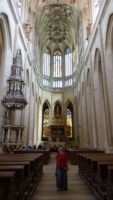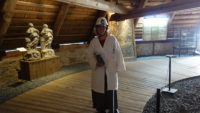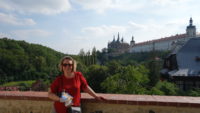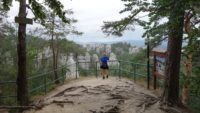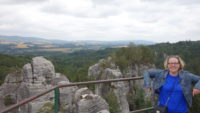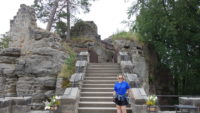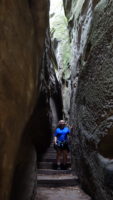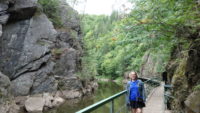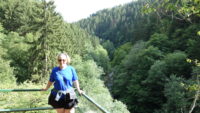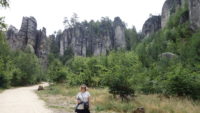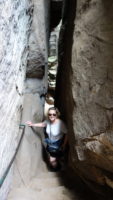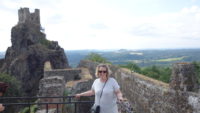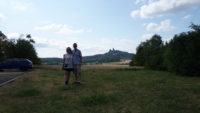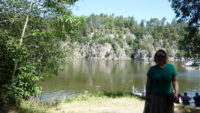 Today was a happy-sad day. Sad because it was our last day of touring in Czechia, at least on this trip. Happy because I could turn in the rental car and rely on public transportation again. I find driving in Europe to be stressful, so it is always a bit of a relief to be rid of the automobile.
Today was a happy-sad day. Sad because it was our last day of touring in Czechia, at least on this trip. Happy because I could turn in the rental car and rely on public transportation again. I find driving in Europe to be stressful, so it is always a bit of a relief to be rid of the automobile.
But, before we get to Prague, there was more touring to do! I knew it was going to be hot in Prague today, so I wanted to stop somewhere along the way to break up the drive and to putter about somewhere not fully paved with roads and sidewalks baking in the sun. We happened to see a postcard of Castle Zvikov in our B and B in Cesky Krumlov, and so I looked it up. It looked beautiful and looked to be about halfway to Prague. That was our stop.
I was very much surprised to drive through the narrow streets of the small village near the castle only to pull up to a large parking lot nearly full of cars and with a tour bus. It seems that while Zvikov is not on the tour routes known to most Americans, the Czechs know it very well.
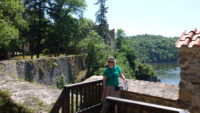 While we did not tour the interior rooms of the castle, the grounds and the fortifications were open in which to wander for free. The castle is built on a small peninsula where the smaller Otava and the larger Vltava rivers come together, with a grand view of the rivers, the cliffs around, and the heavily forested hills on the shores. There is also a landing for two boat services that offer to take you up the river and back, but I could not figure out where to buy tickets or how things worked, so I gave up on any boat tours.
While we did not tour the interior rooms of the castle, the grounds and the fortifications were open in which to wander for free. The castle is built on a small peninsula where the smaller Otava and the larger Vltava rivers come together, with a grand view of the rivers, the cliffs around, and the heavily forested hills on the shores. There is also a landing for two boat services that offer to take you up the river and back, but I could not figure out where to buy tickets or how things worked, so I gave up on any boat tours.
We strolled around all the open parts of the castle, resting wherever there was shade and a good view. There were a number of people about, but it never felt crowded; my guess is many people parked in the lot and then took a boat tour.
 From the castle, we made our way to the Prague airport, with only a slight detour around the airport to find a gas station to fill the rental car. While there is a gas station on the leaving-the-airport side of the road, for some odd reason there is not one on the going-to-the-airport side. With the help of the GPS, we made it work, and said goodbye to our car. As an added bonus, we met a man in the rental lobby who had his cat with him, so we got to pet a kitty.
From the castle, we made our way to the Prague airport, with only a slight detour around the airport to find a gas station to fill the rental car. While there is a gas station on the leaving-the-airport side of the road, for some odd reason there is not one on the going-to-the-airport side. With the help of the GPS, we made it work, and said goodbye to our car. As an added bonus, we met a man in the rental lobby who had his cat with him, so we got to pet a kitty.
We took the bus to the metro, and then walked to our hotel with only one consultation of a map. We got settled, and then took the metro to the Jewish Quarter, where I promptly got lost and proved how close that area is to the Old Town Square when we suddenly turned a corner and found it. We were not supposed to be there. Another hasty map consultation and some furrowed-brow moments, and we found our destination – Speculum Alchemy, the alchemy museum.
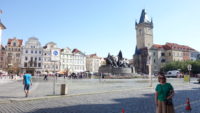 Back around 1600, the Habsburg king moved his court to Prague. Johannes Kepler and Tycho Brahe both came to work for the court as Prague became a center of learning. The king also sanctioned a secret alchemy lab, where serious minds worked on potions and medicines and tried to transform base metals into valuable ones. At some point, the cellar labs caught fire, and the entrance was bricked over, and so the labs were lost for almost four hundred years. The river flooded badly in 2002, and part of the street in front of the now-museum collapsed, revealing an old underground passage that led to the old labs, where much of the original equipment had survived, including Latin copies of the recipes for the medicines and potions they made.
Back around 1600, the Habsburg king moved his court to Prague. Johannes Kepler and Tycho Brahe both came to work for the court as Prague became a center of learning. The king also sanctioned a secret alchemy lab, where serious minds worked on potions and medicines and tried to transform base metals into valuable ones. At some point, the cellar labs caught fire, and the entrance was bricked over, and so the labs were lost for almost four hundred years. The river flooded badly in 2002, and part of the street in front of the now-museum collapsed, revealing an old underground passage that led to the old labs, where much of the original equipment had survived, including Latin copies of the recipes for the medicines and potions they made.
The museum is very small, but it is (now) dramatically hidden behind a bookcase, which is a nice touch. The lab consisted of only five rooms, but the story was interesting and the fact they had so many original furnishings was great. Who forgets all these things for almost four hundred years? Neat.
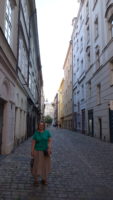 After the museum, we strolled back from the Old Town Square, heading to Wenceslas Square. We stopped for supper at an Italian place run by real Italians, and it was in a secluded inner courtyard, making it peaceful, even just fifty yards from tourist central. After supper, we swung by Wenceslas Square to check out the Gallery of Steel Figures, which looked wonderfully touristy, but it was getting late. I’ll settle for a castle and a lost four-hundred-year-old room, and I’ll see the Gallery next time we are in Prague.
After the museum, we strolled back from the Old Town Square, heading to Wenceslas Square. We stopped for supper at an Italian place run by real Italians, and it was in a secluded inner courtyard, making it peaceful, even just fifty yards from tourist central. After supper, we swung by Wenceslas Square to check out the Gallery of Steel Figures, which looked wonderfully touristy, but it was getting late. I’ll settle for a castle and a lost four-hundred-year-old room, and I’ll see the Gallery next time we are in Prague.
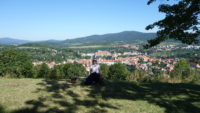
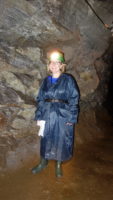
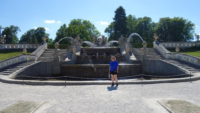
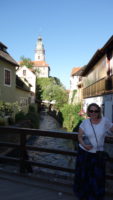
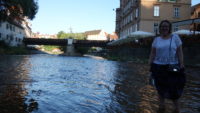
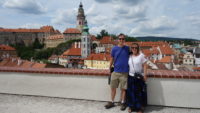
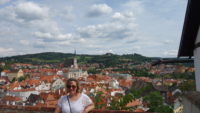
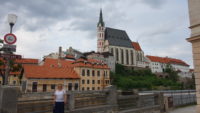
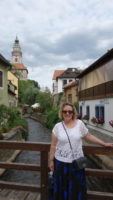

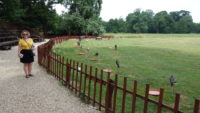
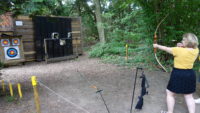
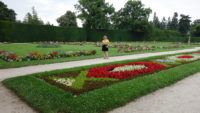
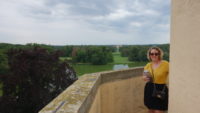
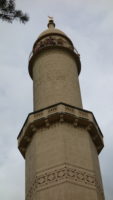
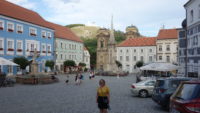
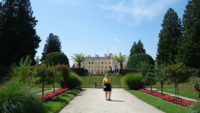
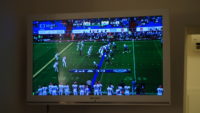

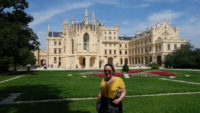
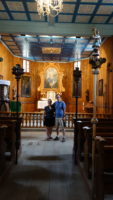
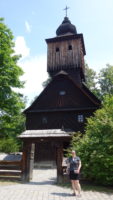
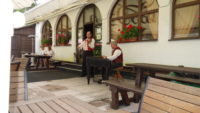
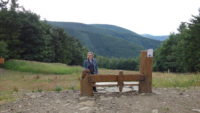
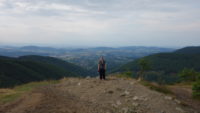
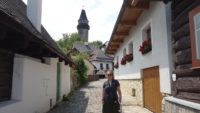
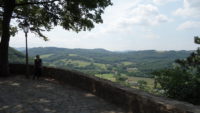

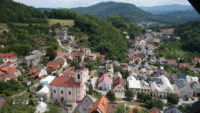
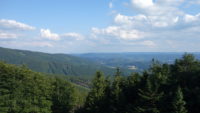
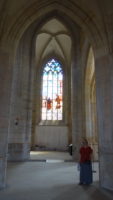
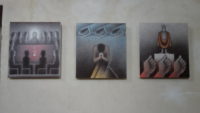 A monk piled up bones into pyramids in the crypt of the church in the 1600s, and then later, in the 1800s, an architect decided to expand that vision into full decorations made out of human bones. It is a bit odd, yes, but the point of these things (and this is the third such place to which we have been in Europe) is that life is short, and then you have to face God. The recording to which we were listening even gave a non-pushy version of the gospel, telling us that these dead were waiting in hope for the resurrection of the dead in Jesus.
A monk piled up bones into pyramids in the crypt of the church in the 1600s, and then later, in the 1800s, an architect decided to expand that vision into full decorations made out of human bones. It is a bit odd, yes, but the point of these things (and this is the third such place to which we have been in Europe) is that life is short, and then you have to face God. The recording to which we were listening even gave a non-pushy version of the gospel, telling us that these dead were waiting in hope for the resurrection of the dead in Jesus.